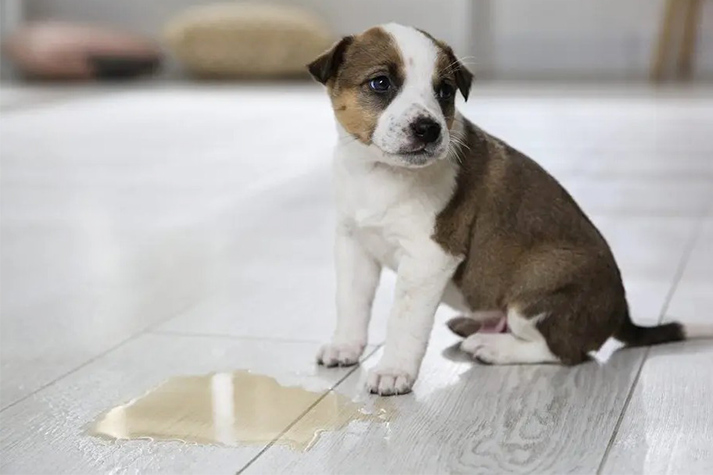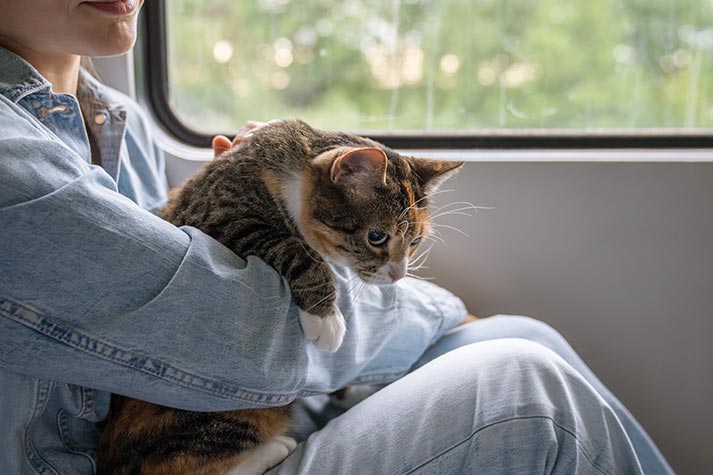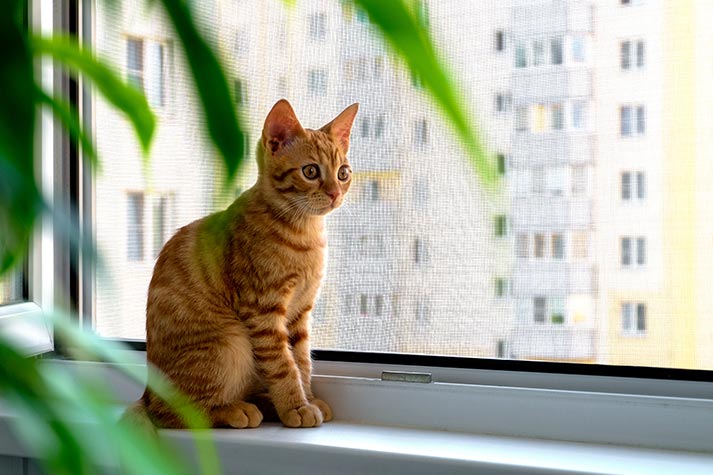
28 Mar
How to Prevent Your Pet’s Marking Behaviour in Your New Home
When it comes to big changes in life, few are bigger than moving. Moving or relocating can be stressful, especially if it is a long-distance move across states or continents. For our pets, the experience is even more stressful, as they cannot understand why they are being taken away from their familiar surroundings.
While you may be preoccupied with unpacking and settling in, your dog or cat might be dealing with a different kind of stress: territorial insecurity. This can sometimes lead to undesirable behaviours, like marking inside the house. Marking is not just accidental or your pet misbehaving; marking is asserting dominance and them claiming this new territory as theirs.
Dogs and cats use urine to mark their territory, leaving behind pheromones and other chemicals that communicate important messages to other animals. However, it’s an unpleasant smell to you and others around your home. While you might want to be understanding, no one wants pet urine (or the smell of it) lingering in their home.
Unneutered pets are more likely to mark, though even spayed or neutered animals may do it. This is because urine marking is about more than territory; it also signals reproductive availability. While it can be inconvenient, understanding why this happens and taking proactive steps can help prevent accidents and ease your pet’s transition into their new environment.
Here's How to Prevent Pet Marking Behaviour at Home
Understanding Pet Marking and How to Manage It
Why Dogs Mark
Dogs instinctively mark their territory to establish ownership and security. If they feel uneasy in a new space, they may start marking indoors. Your new home might not carry the scent of a previous pet, but it definitely does not smell like your dog yet. To them, marking your house (and you and your belongings) is their way of making it feel like home. Basically, they are letting other dogs know you belong to them.
Why Cats Mark
Cats dislike change. For them, marking can stem from both insecurity and defiance. Unlike pack animals, wild cats use marking as a warning to others to stay away. This often takes the form of spraying on walls or vertical surfaces indoors rather than urinating on floors.
Cleaning Is Key
If pets can still smell their markings, they will be tempted to repeat the behaviour. This is why immediate cleanup is crucial, especially for fabrics and absorbent surfaces. Avoid hot water or steam, as these can make urine enzymes persist instead of eliminating them.
Also, be sure to skip ammonia-based cleaners; since urine contains ammonia, these products can encourage marking. Instead, use enzymatic cleaners specifically designed to neutralize pet urine. To prevent repeat incidents, keep pets away from marked areas or repurpose those spaces for feeding or playtime.
Helping Your Pet Settle In
Make the transition smoother by familiarizing your pet with their travel kennel before the move. Line it with a blanket, t-shirt, or towel that carries the scent of home. This comforting scent can help ease stress during travel and provide familiarity upon arrival. Bringing their favourite toy and regular food also helps maintain a sense of stability.
Once in the new home, spend quality time playing and relaxing with them. This reassures dogs that their pack leader is still with them and reminds cats that their favourite lap has not disappeared. Ensure easy access to outdoor spaces or a fresh litter box to prevent accidents. If you will be gone for long periods, consider using the kennel to discourage marking.
Reinforce, do not Punish
If your pet attempts to mark, stay observant but avoid punishment. Post-marking discipline or punishment does not work, as they will not connect the scolding to their action. Yelling or rubbing their nose in it only increases stress and seclusion. Instead, focus on reassurance and prompt cleaning to maintain a comfortable, stress-free transition to your new home.
A Fresh Start for You and Your Pet
Moving to a new home is a big adjustment for both you and your pet. Marking is their way of coping, but with patience, proper cleanup, and reassurance, you can help them feel secure without unwanted accidents. Establishing routine, providing familiar comforts, and reinforcing positive behaviours will go a long way in making your new place feel like home for both of you.






AUTHOR’S BIO
Carry My Pet
Passionate pet enthusiasts and globetrotters, dedicated to easing furry friends' journeys worldwide. Penning tales of compassion at CarryMyPet, where every relocation is a tail-wagging adventure.